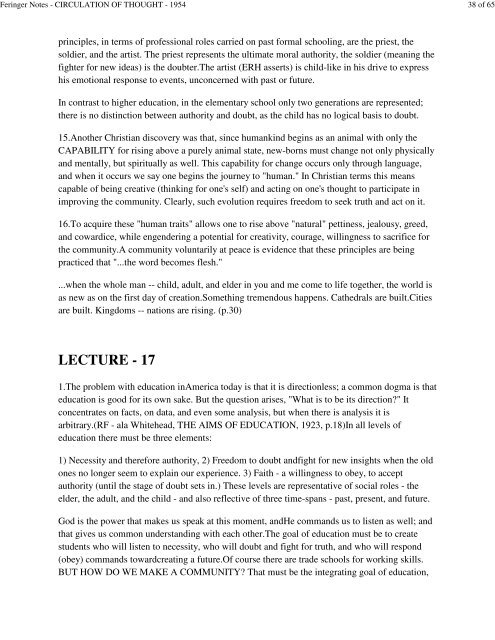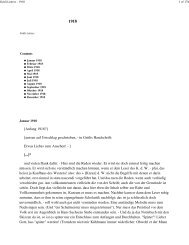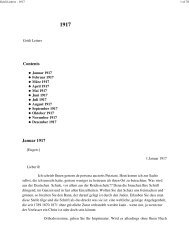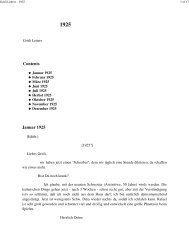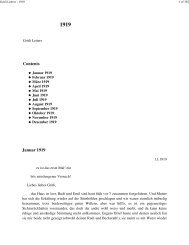Download pdf file - Eugen Rosenstock-Huessy
Download pdf file - Eugen Rosenstock-Huessy
Download pdf file - Eugen Rosenstock-Huessy
You also want an ePaper? Increase the reach of your titles
YUMPU automatically turns print PDFs into web optimized ePapers that Google loves.
Feringer Notes - CIRCULATION OF THOUGHT - 1954 38 of 65<br />
principles, in terms of professional roles carried on past formal schooling, are the priest, the<br />
soldier, and the artist. The priest represents the ultimate moral authority, the soldier (meaning the<br />
fighter for new ideas) is the doubter.The artist (ERH asserts) is child-like in his drive to express<br />
his emotional response to events, unconcerned with past or future.<br />
In contrast to higher education, in the elementary school only two generations are represented;<br />
there is no distinction between authority and doubt, as the child has no logical basis to doubt.<br />
15.Another Christian discovery was that, since humankind begins as an animal with only the<br />
CAPABILITY for rising above a purely animal state, new-borns must change not only physically<br />
and mentally, but spiritually as well. This capability for change occurs only through language,<br />
and when it occurs we say one begins the journey to "human." In Christian terms this means<br />
capable of being creative (thinking for one's self) and acting on one's thought to participate in<br />
improving the community. Clearly, such evolution requires freedom to seek truth and act on it.<br />
16.To acquire these "human traits" allows one to rise above "natural" pettiness, jealousy, greed,<br />
and cowardice, while engendering a potential for creativity, courage, willingness to sacrifice for<br />
the community.A community voluntarily at peace is evidence that these principles are being<br />
practiced that "...the word becomes flesh."<br />
...when the whole man -- child, adult, and elder in you and me come to life together, the world is<br />
as new as on the first day of creation.Something tremendous happens. Cathedrals are built.Cities<br />
are built. Kingdoms -- nations are rising. (p.30)<br />
LECTURE - 17<br />
1.The problem with education inAmerica today is that it is directionless; a common dogma is that<br />
education is good for its own sake. But the question arises, "What is to be its direction?" It<br />
concentrates on facts, on data, and even some analysis, but when there is analysis it is<br />
arbitrary.(RF - ala Whitehead, THE AIMS OF EDUCATION, 1923, p.18)In all levels of<br />
education there must be three elements:<br />
1) Necessity and therefore authority, 2) Freedom to doubt andfight for new insights when the old<br />
ones no longer seem to explain our experience. 3) Faith - a willingness to obey, to accept<br />
authority (until the stage of doubt sets in.) These levels are representative of social roles - the<br />
elder, the adult, and the child - and also reflective of three time-spans - past, present, and future.<br />
God is the power that makes us speak at this moment, andHe commands us to listen as well; and<br />
that gives us common understanding with each other.The goal of education must be to create<br />
students who will listen to necessity, who will doubt and fight for truth, and who will respond<br />
(obey) commands towardcreating a future.Of course there are trade schools for working skills.<br />
BUT HOW DO WE MAKE A COMMUNITY? That must be the integrating goal of education,


